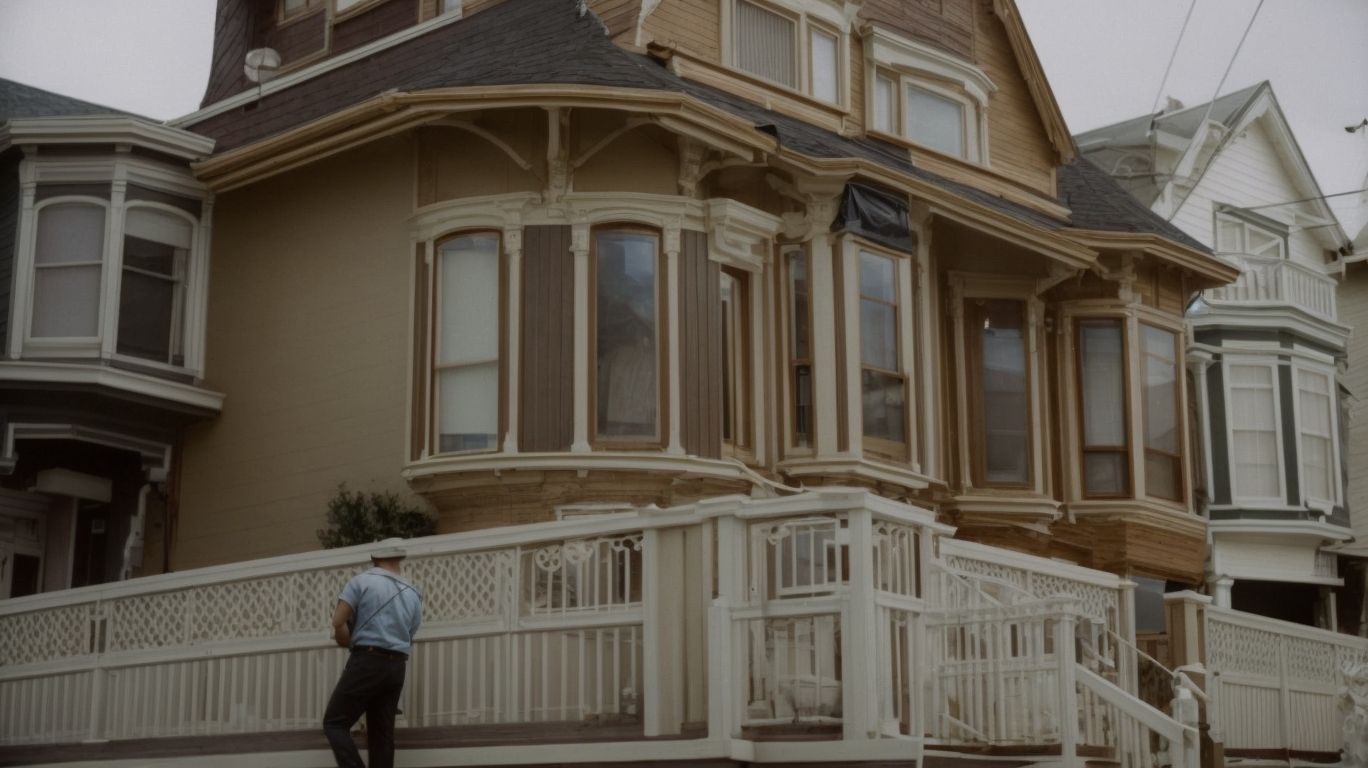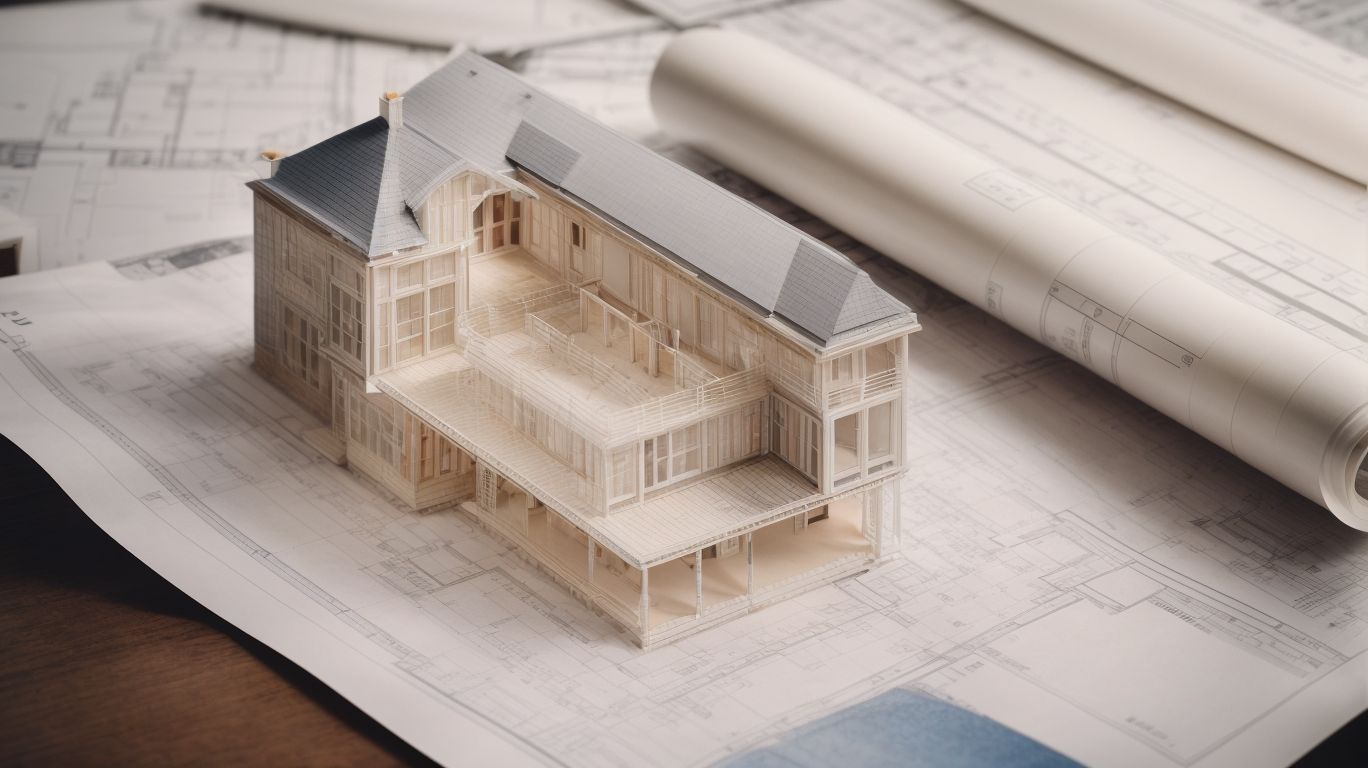
Structural Inspections in SF: Essential for Safe Home Remodeling
Structural inspections are a crucial aspect of maintaining the safety and integrity of a home, particularly when considering remodeling or renovation projects. Whether you are a homeowner or a real estate professional, understanding the importance of structural inspections is essential to ensure that any remodeling endeavors are carried out safely and effectively.
In this article, we will delve into the significance of structural inspections, the common areas inspected during the process, signs that indicate the need for an inspection, the recommended frequency of inspections, and the numerous benefits of conducting regular structural inspections. By the end of this article, you will have a comprehensive understanding of the importance of structural inspections in ensuring the safety and longevity of your property.
If you are considering a home remodeling project in San Francisco, understanding the role of structural inspections is paramount.
What Are Structural Inspections?
Structural inspections are crucial processes that ensure the safety and integrity of a building or property, particularly during home remodeling or renovation projects.
These inspections involve a comprehensive assessment of the building’s framework, foundation, load-bearing elements, and overall construction quality. By identifying any structural weaknesses or potential hazards, such as deterioration, corrosion, or improper building practices, these evaluations play a vital role in preventing safety incidents and ensuring the longevity of the structure. They are also instrumental in complying with building codes and regulations, thereby safeguarding the well-being of occupants and preserving the value of the property.
Why Are Structural Inspections Essential for Safe Home Remodeling?
Structural inspections are essential for safe home remodeling as they provide a comprehensive evaluation of a building’s structural integrity and compliance with safety regulations, ensuring that renovation or construction activities are conducted in a secure and code-compliant manner.
This evaluation encompasses a thorough examination of the foundation, load-bearing walls, roofs, and other structural elements to identify any weaknesses, defects, or potential hazards. These inspections play a crucial role in verifying that the remodeling plans adhere to building codes and industry standards, thereby minimizing the risk of structural failures or safety hazards.
By prioritizing structural inspections, homeowners and contractors can proactively address any underlying issues and enhance the overall safety and longevity of the renovated space.
What Are the Common Areas Inspected During a Structural Inspection?
During a structural inspection, several critical areas of a building are thoroughly assessed, including the foundation, roof, walls and framing, plumbing and electrical systems, as well as the HVAC system, to ensure their structural stability and compliance with construction standards and safety regulations.
The foundation is examined to detect any signs of settling, cracks, or water damage, as a strong foundation is essential for overall stability. Roof inspections focus on identifying any deterioration, leaks, or structural weaknesses that could compromise the building’s integrity.
Assessing walls and framing involves checking for structural damage, moisture issues, and proper installation. Plumbing and electrical systems are inspected to confirm they meet safety standards and are free of potential hazards. The HVAC system evaluation ensures proper functionality and compliance with energy efficiency regulations, prioritizing occupant comfort and operational efficacy.
Foundation
The foundation is a critical focus of structural inspections, as it forms the base of the entire structure and its condition significantly impacts the property’s structural integrity, safety, and overall value.
As an essential component of any property, a thorough foundation inspection can reveal potential issues that may compromise the structural stability. Structural assessments are crucial in identifying any signs of damage, such as cracks, settlement, or water intrusion, which could lead to serious structural issues if left unaddressed.
Engaging in regular engineering evaluations of the foundation can help maintain the property’s value and safeguard against costly repairs in the future.
Roof
The roof undergoes comprehensive inspection to assess its condition, material quality, and structural soundness, ensuring that it meets building safety standards, and is free from construction defects that could compromise the overall safety and integrity of the building.
Inspectors evaluate key aspects such as the roofing material’s durability, potential water damage, proper flashing installation, and proper ventilation to prevent moisture buildup and potential mold growth. The assessment includes identifying any signs of wear and tear, proper drainage systems, and the overall structural integrity of the roof. These evaluations are crucial in maintaining a safe and secure building environment and safeguarding against potential hazards or costly repair issues in the future.
Walls and Framing
Walls and framing components are meticulously inspected to identify potential structural deficiencies, ensure compliance with construction standards, and assess the condition of load-bearing walls and support beams, particularly in the context of renovation projects.
This comprehensive inspection involves carefully examining the stability and integrity of walls, assessing the adequacy of framing connections, and verifying that all load-bearing elements meet the necessary safety criteria. Special attention is given to identifying any signs of water damage, rot, or termite infestation that could compromise the structural integrity.
The inspector evaluates whether the construction aligns with the prescribed building codes and regulations, and provides a detailed report outlining any areas for improvement or remediation to ensure the safety and stability of the structure.
Plumbing and Electrical Systems
Plumbing and electrical systems are thoroughly assessed during structural inspections to ensure their compliance with construction standards, building permits, and safety regulations, particularly in the context of home improvement projects, while prioritizing property safety.
This involves a meticulous examination of the piping, fixtures, and wiring to guarantee that they meet the prescribed codes and standards. Inspectors verify that all installations adhere to safety regulations and have been granted the necessary permits. They scrutinize the systems for any potential hazards or deficiencies. It is crucial to prioritize property safety, as these systems are fundamental to the functionality and security of a home.
By integrating these inspection procedures, homeowners can have peace of mind knowing that their living space meets construction standards and safety regulations.
HVAC System
The HVAC system is subject to thorough inspection to evaluate its performance, condition, and compliance with construction codes and regulations, especially in the context of residential construction, building inspections, and property assessments.
During the inspection process, various components of the HVAC system such as the heating and cooling units, ventilation systems, ductwork, and controls are carefully assessed for functionality and adherence to safety standards. This evaluation is vital not only for ensuring the comfort and efficiency of the property but also for identifying any potential issues that may impact indoor air quality and energy consumption.
These inspections play a critical role in construction surveys and building evaluations, as they provide essential insights into the overall condition of the property’s HVAC infrastructure.
What Are the Signs That Indicate the Need for a Structural Inspection?
Several signs warrant the need for a structural inspection, including visible cracks in walls or foundation, uneven floors, water damage, and a sagging roof, as these indicators could point towards potential structural deficiencies or damage.
Not only can visible cracks and water damage hint at potential structural issues, but also the presence of mold or mildew, doors and windows becoming difficult to close, or a musty odor in the building. These signs can be indicative of underlying problems that could compromise the safety and integrity of the structure.
It’s crucial to address these indicators promptly to prevent further damage, ensure the safety of occupants, and preserve the long-term structural stability of the building.
Cracks in Walls or Foundation
The presence of cracks in walls or the foundation signifies potential structural issues, highlighting the need for a thorough inspection to assess earthquake resistance, identify construction defects, and address any underlying structural damage.
Such cracks can compromise the stability and safety of a building, making it vulnerable to seismic activity. It is essential to evaluate the severity and location of these cracks to determine the extent of the damage and the required repairs.
Overlooked cracks may lead to further deterioration, amplifying the risk of collapse during an earthquake. Therefore, timely detection and proper remediation of these cracks are crucial for ensuring the structural integrity and safety of the building.
Uneven Floors
Uneven floors can serve as indicators of structural issues, prompting the need for a comprehensive inspection to ensure compliance with construction standards, building permits, and to mitigate any potential impact on property value, particularly in the context of renovation projects.
This is crucial as building permits often require adherence to specific construction requirements, and any deviations may lead to property assessment implications. Renovation projects, in particular, necessitate careful consideration of the impact of uneven floors on the overall property value and safety. Addressing these issues promptly can not only ensure compliance but also enhance the longevity and appeal of the property, thereby contributing to a more favorable property assessment.
Water Damage
Water damage serves as a clear indicator of potential structural issues and safety hazards, necessitating a thorough inspection to assess building and property safety, particularly in the context of ensuring home safety and construction standards compliance.
This type of damage, if left unaddressed, can compromise the stability of a structure, leading to costly repairs and the depreciation of property value. The presence of moisture can give rise to mold and mildew, posing health risks to occupants.
Regular property inspections can help identify and rectify water damage, thus ensuring the long-term safety and integrity of a building.
Sagging Roof
A sagging roof is a significant indicator of potential structural issues and safety concerns, necessitating a comprehensive inspection to evaluate building safety, property assessments, and construction surveys, particularly in the context of residential renovation.
Structural instability due to a sagging roof can undermine the overall integrity of a property, impacting its value in property assessments and potentially leading to costly repairs. In construction surveys, identifying and addressing a sagging roof is essential to ensure the safety and stability of the entire structure.
When undertaking residential renovation projects, understanding the implications of a sagging roof is crucial to prioritize necessary repairs and improvements for the overall safety and longevity of the property.
How Often Should Structural Inspections Be Done?
Structural inspections should be conducted regularly to ensure ongoing safety, structural integrity, and code compliance, with the frequency varying based on factors such as the age of the building, environmental conditions, and any prior history of structural issues or renovations.
These factors play a crucial role in determining the appropriate inspection schedule for buildings. Older structures or those located in harsh environmental conditions may require more frequent assessments to monitor and address any potential deterioration. Buildings with a history of structural issues or recent renovations should also be inspected more regularly to ensure that any problems are promptly identified and rectified, preserving the safety and integrity of the property. Compliance with safety regulations and property assessment requirements further underlines the significance of consistent structural inspections.
What Are the Benefits of Regular Structural Inspections?
Regular structural inspections offer several benefits, including:
- Early detection of issues
- Cost savings
- Ensuring safety
- Peace of mind
- Contributing to increased property value
These inspections play a crucial role in identifying potential problems before they escalate, thereby minimizing the need for costly repairs in the future. They provide assurance to residents and property owners that their building complies with safety standards, meeting the requirements set by regulations and codes.
By maintaining structural integrity, regular inspections can significantly enhance the property’s value, making it an attractive and secure investment.
Early Detection of Issues
Regular structural inspections enable the early detection of potential issues, allowing for timely structural analysis, building assessments, and property evaluations to address any emerging concerns promptly.
This proactive approach is crucial as it not only helps in identifying structural weakness or defects in the early stages but also prevents the escalation of potential problems, leading to substantial cost savings in the long run.
By integrating advanced technologies such as drone inspections and non-destructive testing methods, professionals can conduct comprehensive property assessments, providing a detailed understanding of the structural integrity and any potential vulnerabilities. This attention to detail during inspections plays a vital role in ensuring the safety and longevity of the property infrastructure.
Cost Savings
Regular structural inspections contribute to cost savings by identifying and addressing potential construction defects, ensuring building safety, and preserving property value, thereby mitigating the need for expensive repairs or renovations in the future.
These inspections help property owners to avoid the substantial costs associated with major structural issues that may arise if left unattended. By addressing defects early, such as foundation cracks or structural weaknesses, property owners can prevent more extensive damage and minimize the need for extensive renovations or even complete rebuilding.
Regular inspections can result in lower insurance premiums by demonstrating proactive maintenance and risk management, ultimately protecting the property’s long-term value.
Ensures Safety and Peace of Mind
Regular structural inspections provide assurance of safety and peace of mind for property owners, ensuring compliance with building regulations, safety standards, and construction safety measures, thereby fostering a secure and tranquil living environment.
These inspections help property owners identify and address structural weaknesses, potential hazards, or non-compliance issues before they pose significant risks. Beyond ensuring legal adherence and safety, regular inspections also offer psychological benefits by alleviating concerns and enhancing confidence in the structural integrity of the property. This proactive approach can ultimately minimize the likelihood of accidents, enhance property value, and contribute to a sense of security within the community.”
Increases Property Value
Regular structural inspections contribute to increasing property value by maintaining building safety, facilitating accurate property assessments, and ensuring the integrity and desirability of properties, particularly in the context of residential renovations and real estate transactions.
These inspections play a critical role in identifying potential issues such as foundation cracks, structural weaknesses, or deteriorating components, which, if left undetected, could lead to decreased property value and expensive repairs. They provide valuable insights for homeowners, allowing them to address any structural concerns promptly, thereby enhancing the overall marketability of their properties in the competitive real estate market.




No Comments